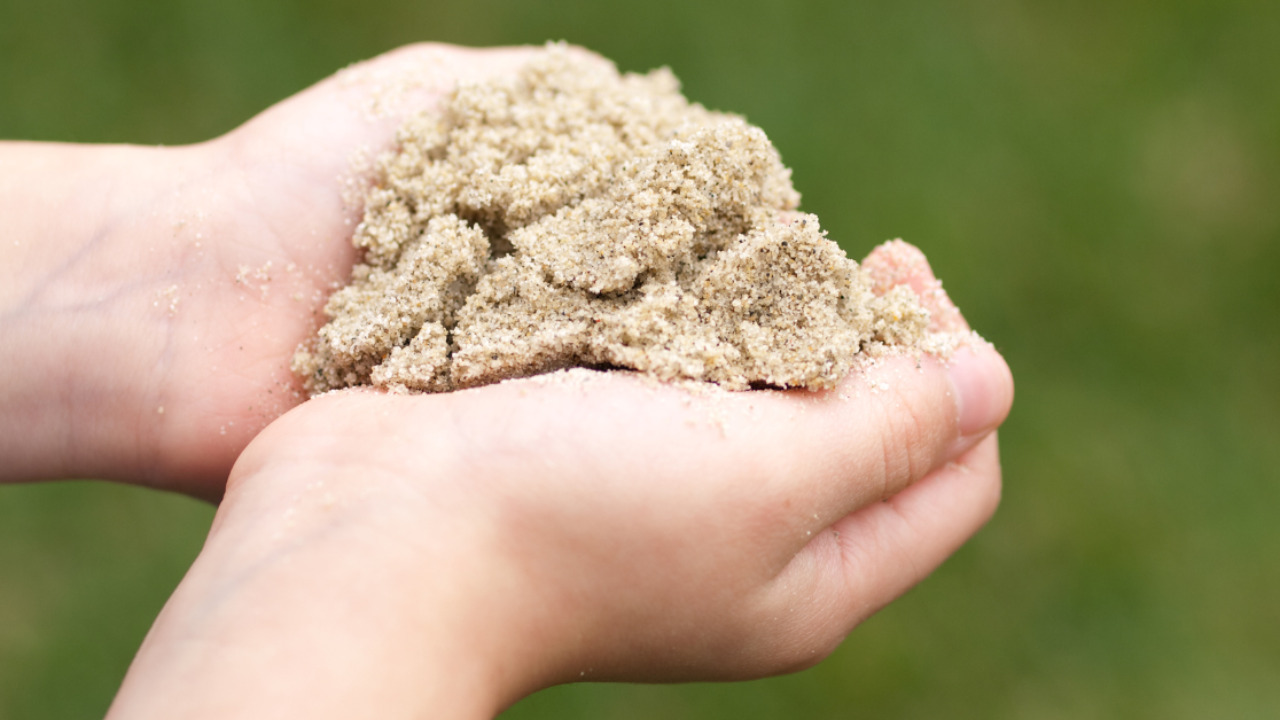How Can Sandtray Therapy Help?

By Marlee Bardenett, LCPC, NCC
EMDRIA Consultant in Training
When I was trained in EMDR, I was so excited to have such a powerful approach for treating trauma. As a bonus, I was thrilled to hear that EMDR and Sandtray could be used together. EMDR is so adaptable and allows clinicians to bring their creative interventions to the trauma processing space. I was trained in Sandtray Therapy while I was in graduate school. Being trained in Sandtray and EMDR has allowed me to combine two passions. Sandtray and EMDR are well-suited to be used together to support clients. I have noticed that Sandtray is especially helpful for clients who need support with visualizing and grounding.
Homeyer and Sweeney define Sandtray Therapy as “an expressive and projective mode of psychotherapy involving the unfolding and processing of intra- and interpersonal issues through the use of specific sandtray materials as a nonverbal medium of communication, led by the client(s) and facilitated by a trained therapist,” (2011). Sandtray is a play intervention and is suitable for use with clients of all ages. Sandtray is an incredible stand alone therapy that can also be used during each phase of EMDR.
Why Use Sandtray Therapy?
Sandtray Therapy allows clients to connect with the right hemisphere of their brains and helps them express emotional experiences that are otherwise difficult to verbalize. This supports EMDR as it helps clients connect with those emotional and body sensation channels in order to process trauma memories. As clients create scenes in the sandtray, they engage with the sand and the miniatures which meet their human need for kinesthetic experiences (Armstrong, 2008). This allows for grounding, soothing, and safe connection while processing upsetting material.
Creating scenes in the sandtray allows a client to maintain safe therapeutic distance from traumatic material. In EMDR, this allows for titration and supports regulation when a client is feeling flooded or overwhelmed. Sandtray Therapy also supports the natural use of metaphors and symbolism which can be a powerful tool in trauma work. The sandtray also acts as a container. Clients can place their big emotions into a contained space. They can further contain upsetting material by using fences, burying items in the sand, and by using other miniatures to support containment.
Using Sandtray In Phase Two
I have found that sandtray can support Resourcing during Phase Two. When I have clients create their calm place in the tray, I can easily see how well a client is able to tolerate positive affect. When a calm place is very “busy” or has a lot of protective barriers around it, I can tell that we may need to spend more time in Phase Two. I love creating calm places in the sand tray because it makes an abstract, imaginary space real and tangible. Clients often take pictures of their calm place sandtray to carry with them. Making the calm place real helps clients connect to the resource more deeply.
Clients can also create a team of resources in the sandtray. Clients can pick out miniatures to represent their wise figures, nurturers, and protectors. It is so powerful to support clients as they tap in a scene where resources are surrounding and supporting them.
Using Sandtray To Support Pendulation
I use a sandtray most often to support the use of Pendulation Protocol. Clients create resource and trauma target sandtrays. We use the trays as we pendulate from resource to target memory and back to our resource. I have seen that clients ground themselves and regulate when tangible reminders of their resources are present. During processing, clients will often move their resources and other adaptive information into their target memory sandtrays.
Training and Considerations
Both Sandtray Therapy and EMDR require further training in order to ethically and effectively support clients as they process traumas. Both approaches are deep forms of processing that require special care and rapport with clients. If you are interested in getting trained in EMDR, be sure to choose an EMDRIA-approved training. Once you have completed Basic Training, there are many advanced trainings that can teach you how to integrate EMDR with other approaches. Trauma Specialists Training Institute (TSTI) is an EMDRIA-approved provider of EMDR Basic Training, Advanced Trainings, and ongoing consultation. For more information, check out our website at traumaspecialiststraining.com.
About the Author
Marlee Bardenett, LCPC, LPC completed an EMDRIA-approved EMDR Basic Training course in 2020. EMDR has transformed the way she conceptualizes cases and approaches therapy. Marlee enjoys using Sandtray and creative approaches to support clients during all eight phases of EMDR. Marlee is an EMDR Certified Therapist and a Consultant in Training with Trauma Specialists Training Institute.
Sign up for our Basic Training today!
Bibliography
Armstrong, S. (2008). Sandtray Therapy: A Humanistic Approach. Dallas, TX: Ludic Press.
Gomez, A. (2013). EMDR Therapy and Adjunct Approaches with Children: Complex Trauma, Attachment, and Dissociation. New York: Springer Publishing Company
Homeyer, L. E., & Sweeney, D. S. (2011). Sandtray Therapy, A Practical Manual. (2nd ed.) New York: Routledge.
Shapiro, F. (2001). Eye movement & desensitization & reprocessing: Basic principles, protocols, and procedures. (3rd ed.). New York: Guilford Press.

